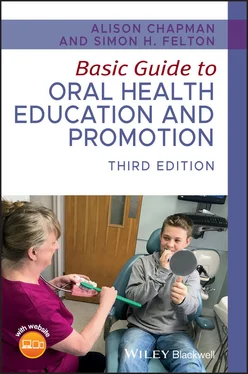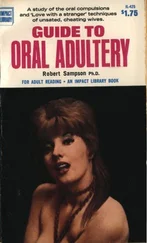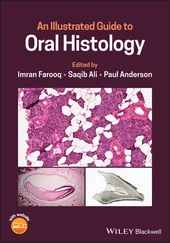Dentine is:
Softer than enamel, but harder than cementum and bone.
Light yellow in colour.
Sensitive to stimuli (e.g. hot, cold, and sweet substances). Reasons for this sensitivity are not fully understood, but it usually lessens with age.
Dentine also changes throughout life. After a tooth is fully developed, more dentine is laid down and is called secondary dentine.
Cementum covers the surface of the root ( Figure 1.9) and provides an attachment for the periodontal ligament. The fibres of the ligament are fixed in the cementum and in the alveolar bone (see supporting structures of the tooth).
Cementum is of similar hardness to bone and thickens throughout life to counteract wear and tear caused by chewing and movement.
Pulp is a soft living tissue within the pulp chamber and root canal of the tooth ( Figure 1.9). It consists of blood vessels, nerves, fibres, and cells.
The pulp chamber shrinks with age as more secondary dentine is laid down, so that the tooth becomes less vulnerable to damage.
Supporting structures of the tooth
The periodontium ( Figure 1.10) is the collective name for the supporting structures of the tooth.

Figure 1.10 The periodontium.
Source: From [6]. Reproduced with permission of Blackwell.
It comprises:
Periodontal ligament.
Cementum (part of the tooth and supporting structure).
Alveolar bone (see later in chapter). This develops as the tooth erupts, forming the alveolus of the mandible and maxilla.
Gingivae (gums).
The periodontal ligament is a connective tissue that holds the tooth in place in the alveolar bone (assisted by cementum). The ligament is between 0.1–0.3 mm wide and contains blood vessels, nerves, cells, and collagen fibres [7].
The collagen fibres attach the tooth to the alveolar bone and run in different directions, which provide strength and flexibility, and act as a shock absorber for the tooth; teeth need to move slightly in their sockets in order to withstand the pressures of mastication (chewing). Imagine what it would feel like to bite hard with teeth rigidly cemented into bone.
See Structure of the tooth .
Alveolar bone (also known as the alveolar ridge)
Alveolar bones are horseshoe‐shaped projections of the maxilla and mandible. They provide an attachment for the fibres of the periodontal ligament, sockets for the teeth, and support the teeth by absorbing and distributing occlusal forces.
The gingivae (gums) consist of mucous membranes and underlying fibrous tissue, covering the alveolar bone.
Gingivae are divided into four sections ( Figure 1.11):
1 Attached gingiva – a firm, pale pink (but may have some brown pigmentation), stippled gum tightly attached to the underlying alveolar bone. It is keratinised (hard and firm‐like horn) to withstand the friction of chewing. Its orange‐peel appearance (stippling) comes from tightly packed bundles of collagen fibres that attach it to the bone. Loss of stippling is one of the signs of gingivitis (see Chapter 3).
2 Free gingiva – where the gum meets the tooth. It is less tightly attached and not stippled. It is also keratinised and contoured to form little points of gum between teeth – the interdental papillae. The indentation between attached and free gingiva is called the free gingival groove. Figure 1.11 Gingivae.Source: [2]. Reproduced with permission of Blackwell.
3 Gingival crest – the edge of the gum and interdental papillae bordering the tooth. Behind the crest is the gingival sulcus (or crevice), which is not more than 2 mm in depth [7]. This base of the crevice is lined with a layer of cells called the junctional epithelium, which attaches the gum to the tooth. When this epithelium breaks down, in disease, periodontal ligament fibres are exposed to bacterial enzymes and toxins. As these fibres break down, a periodontal pocket is formed.
4 Mucogingival junction – the meeting point of the keratinised attached gingiva and the non‐keratinised vestibular mucosa (soft, dark red tissue, which lines the inside of lips, cheeks, and the floor of the mouth).
THE TONGUE AND THE FLOOR OF THE MOUTH
The tongue is a muscular, mobile organ, which lies in the floor of the mouth, and is comprised of four surfaces:
1 Dorsal (upper) surface – covered by a thick, keratinised epithelium to withstand chewing, and a large number of projections called papillae. These papillae contain taste buds. The dorsal surface is divided into two sections:Anterior (front) two‐thirds (against the palate).Posterior (back) third (towards the pharynx).
2 Ventral (under) surface – covered by a thin mucous membrane. In the middle of the front section, the mucosa is divided by a sharp fold (the lingual frenulum), which joins the tip of the tongue to the floor of the mouth.
3 Tip – the pointed front, which can be protruded or moved around the mouth by muscular action. For a baby, the tip of the tongue is an important sensory organ, which explores and identifies objects. It also acts as a great natural cleanser, removing food debris.
4 Root – the deep attachment of the tongue, which forms the anterior surface of the pharynx.
There are two groups of tongue muscles:
1 Intrinsic (inside) – which can alter its shape.
2 Extrinsic (outside) – which move the tongue and also help alter its shape.
The main functions of the tongue are:
Taste.
Mastication (chewing).
Deglutition (swallowing).
Speech.
Cleansing.
Protection.
The tongue (and other parts of the oral cavity) is covered with taste buds that allow us to distinguish between sweet, sour, salt, bitter, and umami (savoury) tastes. An adult has approximately 9000 taste buds, which are mainly situated on the upper surface of the tongue (there are also some on the palate and even on the throat) [7].
The tongue helps pass a soft mass of chewed food (bolus) along its dorsal surface and presses it against the hard palate.
The tongue helps pass the bolus towards the entrance of the oesophagus.
Tongue movement plays a major part in the production of different sounds.
Tongue muscles allow for tremendous movement, and the tongue can help remove food particles from all areas of the mouth (mainly using the tip).
The tongue moves saliva (which has an antibacterial property) around the oral cavity.
Conditions affecting the tongue
The following conditions affect the tongue (see Chapter 8for more detail/images):
Glossitis (inflammation of the tongue) – a symptom of conditions such as dry mouth, infections, injury from a burn, irritants, vitamin B complex deficiency, skin conditions (e.g. lichen planus), or an allergic reaction. The underlying cause needs to be treated.
Читать дальше













